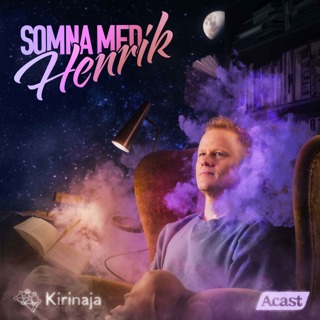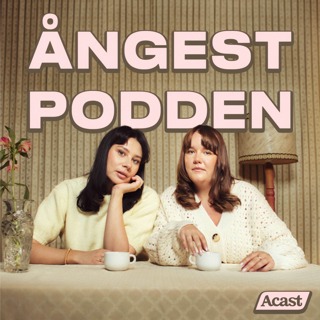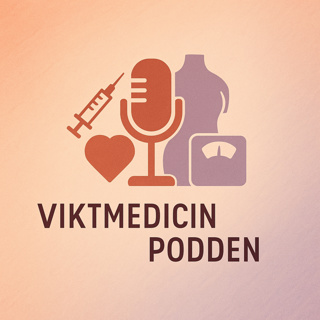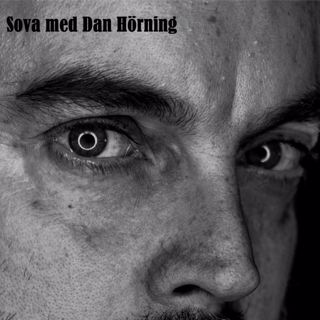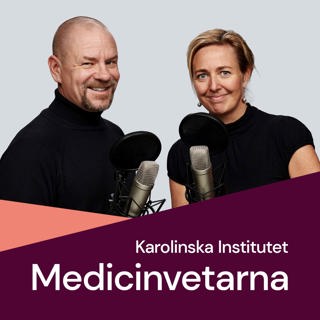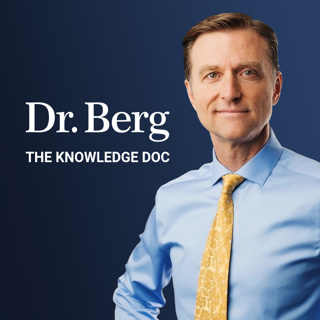
DON'T IGNORE THIS IF YOU'RE OVER 50!!!
All it takes is a small amount of oxidative stress to the eye's lens to develop a cataract. A healthy lens is composed of an organized protein called crystallin. When this tissue becomes damaged, it is not replaced. Glycation can damage the lens of the eye. It results from sugar connecting to a protein and then becoming stuck and unusable to the body. Steroids like Prednisone can also increase the risk of cataracts. Not all surgeries can eliminate cataracts, and they can come with complications. According to “The Cataract Cure” by Dr. Marios Kyriazis, there is a safe, effective remedy for cataracts. Carnosine is a unique compound that can penetrate the lens of the eye and help with cataracts. Carnosine is a potent antioxidant that can dissolve damaged proteins. It can also activate your own antioxidants. NAC (n-acetyl carnosine) eye drops are one of the best remedies for cataracts.In an experiment conducted at the Moscow Helmholtz Research Institute of Eye Diseases, scientists used NAC eyedrops at 1% concentration on rabbits. They found that NAC could reach the inner parts of the eye within 15 to 30 minutes. No side effects were reported during this experiment. The author concluded that NAC is a proposed eye treatment for eye disorders, including cataracts, glaucoma, corneal disorders, inflammation, and complications from diabetes.The same group of scientists who performed the rabbit studies also tested NAC on humans. They selected 49 volunteers with an average age of 65 who had established age-related cataracts. After 6 months, researchers found that:•41% of people presented a significant reduction of clouding in the lens•90% showed a gradual improvement in vision•89% showed up to a 100% improvement in sensitivity to glare NAC for cataracts must be used for at least 3 to 5 months. Antioxidants such as those found in onions, egg yolks, leafy greens, and grass-fed red meat can protect you against cataracts.Vitamin A is vital for eye health and can be found in cod liver oil and grass-fed liver. B vitamins, especially B2, B6, and folate, are also essential. BOOK LINK: https://www.amazon.com/Cataract-Cure-... DATA:https://pmc.ncbi.nlm.nih.gov/articles...https://pubmed.ncbi.nlm.nih.gov/12001...https://pubmed.ncbi.nlm.nih.gov/26084...
7 Mars 6min

10,000 IU of Vitamin D: HUGE MISTAKE?!
Many people only take between 600 to 2000 IUs of vitamin D each day. Did you know that 10,000 IUs of vitamin D3 is only .25 mg? Vitamin D is the most important vitamin. It controls 10% of your genetics. Over 90% of the population has less than 40 ng per mL of vitamin D3 in their blood. The guidelines of 600 IUs of vitamin D3 are based on preventing rickets, supporting bone health, and managing calcium in the blood, not for the countless other functions of vitamin D. Low vitamin D levels are caused by people staying indoors, location, skin color, and other lifestyle and genetic factors. Low vitamin D symptoms include:•Low back pain•High blood pressure•Depression•Anxiety•Inflammation•Poor immune functionSunblock blocks the absorption of vitamin D. In 1980, society became sun phobic in an attempt to prevent skin cancer, which has continued to increase despite less sun exposure.You need 10,000 IUs of vitamin D daily, especially for immune function. This amount of vitamin D is the same amount you’d get from 20 minutes of sun exposure in the summertime. When you get a blood test for vitamin D, they’re not checking for the active form and are not accounting for vitamin D resistance. Many things block the vitamin D receptor and contribute to vitamin D resistance, including genetics, plastics, forever chemicals, age, weight, inflammation, pregnancy, and lactation.Vitamin D3 won’t work without magnesium. As you increase your vitamin D intake, the demand for magnesium increases. Vitamin K2 and zinc are also vital when increasing your vitamin D dosage.Vitamin D has potent anti-cancer and anti-tumor benefits at therapeutic doses. It can also combat inflammation and autoimmune conditions. Dr. Coimbra of Brazil has seen positive effects with high doses of vitamin D in people with autoimmune conditions. DATA:https://www.hsctstopsms.com/simple-ov...
6 Mars 7min

80% of Heart Attacks & Strokes Happen Because of THIS
If someone dies from a heart attack or stroke, their death is typically the result of a clot. A clot can form in less than 5 seconds! Usually, your body should form a clot, fix the hole in the artery, then dissolve the clot, but this doesn’t always happen.Clots can be caused by the following:•Smoking•Pollution/chemicals•Alcohol•Birth control pills •Stress•Surgery•Endurance sports•Refined starches•Infection•High blood sugar•InflammationExcess calcium in the arteries can also trigger clotting, which can lead to a heart attack or stroke. Postmenopausal women who take large amounts of calcium are at a much greater risk for blood clots. Calcium is involved in over 15 different clotting factors. Vitamin K2 prevents calcium from building up in the soft tissues and arteries. It is found in dairy, butter, and other fatty foods. Always take vitamin D with vitamin K2. Magnesium is another important calcium regulator. It helps prevent calcium from entering the soft tissues, as well as arrhythmias and atrial fibrillation. Nitric oxide can reduce clotting. Vitamin D, L-arginine, and sunlight can increase nitric oxide to help prevent heart attack. Polyphenols, vitamin C, and omega-3 fatty acids all support heart health and may help reduce your risk of clotting.Keto and intermittent fasting can help reduce clotting by reducing inflammation in your arteries. Regular moderate exercise is vital in preventing clotting. Garlic and onion are also essential. Nattokinase, serrapeptase, and bromelain can be taken as supplements to prevent clotting.
5 Mars 6min

CRITICAL: Detoxify Your Brain from Microplastics
Did you know that the brain accumulates 7 to 30 times more microplastics than the liver and the kidneys? In this video, I’m going to tell you how to detox microplastics and forever chemicals that can wreak havoc on your health. Forever chemicals can bind with proteins in your blood, creating problems as they bioaccumulate in the body over time. One report found that the average person has 7 grams of plastic in their brain! Plastic recycling is a scam! Only 9% of plastic can actually be recycled, and the majority sinks to the bottom of the ocean. Scientists are working to develop microbes, fungi, and enzymes that can eat plastic, but until those are developed, there are only two things you can do to detoxify your body of microplastics. First, avoid plastic!High-quality deep sleep is vital to detox microplastics from the brain. Inducing autophagy can also detox microplastics. Fasting for at least 18 hours is one of the best ways to induce autophagy. Plastics and forever chemicals create oxidative stress in the body, which can be countered with strong antioxidant systems. Foods high in sulfur, such as garlic, onions, and cruciferous vegetables, can help strengthen your body’s antioxidant networks. NAC and milk thistle are great for detoxification. Try these tips to reduce microplastics:•Use a water filter•Eliminate plastic cutting boards•Avoid dishwasher pods •Switch to biodegradable coffee filters•Use sea salt from an ancient seabed •Choose natural tea bags without plastic •Avoid plastic baby bottles •Use a stainless steel water bottle •Use plastic-free sponges •Avoid canned food and liquids•Use bamboo toothbrushes •Avoid Teflon•Use glass Tupperware •Avoid plastic dental floss •Use 100% organic cotton tamponsLINKS TO WATER FILTERS:https://www.amazon.com/Travel-Berkey-...https://www.amazon.com/ZeroWater-7-Cu...https://clearlyfiltered.com/products/...
3 Mars 7min

STOP Nighttime Peeing Now: IT REALLY WORKS
Attempting to address urination frequency by treating an enlarged prostate is not the best solution! Frequent urination is often blamed on an enlarged prostate, UTIs, or kidney stones, but there’s a much more common root cause. The most common cause of frequent urination at night is too much insulin in your blood. Insulin resistance is a condition where your insulin receptors no longer accept insulin. To compensate, the pancreas produces more insulin. This is why many diabetics have a problem with urinary frequency at night.When blood sugar is high, the kidneys remove the sugar from the blood to eliminate it from the body. This increases urination frequency. Insulin resistance causes an overactive bladder, even if your blood sugar is normal. Increased urinary frequency at night is an early sign of insulin resistance, which is a precursor to diabetes. Insulin resistance increases stress on the kidneys, which is why diabetes is the leading cause of kidney disease. Insulin resistance can also cause electrolyte imbalances, blood pressure changes at night, and increased cortisol.Snacking at night is the single most significant cause of frequent urination at night. Eliminate all snacks and beverages after dinner to decrease urination frequency at night. Snacking at night can also cause bloating and interrupted sleep. A low-salt diet can also increase urination frequency at night. If you think your nocturia is due to low salt, add more sea salt to your meals throughout the day.A low-carb diet can help reduce nocturia symptoms. Keep your carb consumption under 30 grams per day. Healthy Keto® can combat insulin resistance, improve your health, and reduce frequent urination at night. Intermittent fasting is equally important in reversing insulin resistance. Aim for 3 meals with no snacks, eventually dropping down to 2 meals each day. Ending nocturia will significantly enhance your sleep, which is vital for your heart, blood sugar, stress levels, energy, cognitive function, and more. Don’t forget to get plenty of vitamin D with magnesium.
27 Feb 7min

#1 Best Meal to Clean Out Your Arteries
Instead of telling you what not to eat, today I’m going to tell you what to eat! Find out how to clean your arteries of arterial plaque buildup and discover the unexpected foods that unclog arteries naturally. Overview of the Healthy Keto® Diet: https://bit.ly/4icayrshttps://bit.ly/4bhQRMnThe endothelial layer is the innermost layer of your arteries. It controls blood pressure, acts as a filter, prevents clots, and supports immune function. The inside of your arteries is very susceptible to problems with insulin. Most people have insulin resistance, which is caused by chronic carbohydrate consumption and constant snacking. Nitric oxide relaxes the blood vessels and is vital for the health of the endothelial layer of the arteries. Vitamin D triggers nitric oxide, which is why many people who are low in vitamin D also have high blood pressure. Arginine, testosterone, and magnesium also trigger nitric oxide. Vitamin D and magnesium can help prevent calcium from building up in the arteries, and vitamin K2 also helps to prevent calcium buildup. Foods like whole grains and seed oils are deemed “heart healthy,” but they spike insulin. We’re also told to avoid saturated fats because of the cholesterol content. There’s a lot of false information regarding a diet that’s truly healthy for your heart. The best meal to clean your arteries would involve foods that don’t spike insulin. A low-carb ketogenic diet is best for your heart. The primary part of the best meal to clean out your arteries should be grass-fed red meat. If you’re having a burger, melt raw cheese on top because it’s high in vitamin K2. Red meat is loaded with zinc, which can directly improve your testosterone. Include a salad with your meal. Arugula is a great addition to any salad, as it can increase nitric oxide and is rich in vitamins C and E. Pumpkin seeds are also beneficial due to their high magnesium, zinc, and selenium content. Vitamin D3 is vital for a healthy heart. Sunlight is the best source, but you may need to take a supplement in the winter. Take at least 10,000 IU daily as a maintenance dose.
26 Feb 6min

Egg Prices Are NOT by Accident
What’s really behind the price and scarcity of eggs? Today, I’m going to interview Clayton Baker, M.D. to discuss the recent bird flu outbreak. Egg prices are not random, and the outbreak is not an accident! DATA:https://brownstone.org/articles/bird-...Please join me in welcoming Dr. Clayton Baker! Dr. Baker points out the similarities between the current bird flu outbreak and the COVID-19 outbreak of 2020. The media creates fear, followed by a pandemic, to gain control. This eventually leads to civil rights violations, including lockdowns and work bans.Next, people are coerced into taking profitable yet toxic vaccines as a countermeasure against the outbreak. We are witnessing this once again with the current bird flu outbreak.There are two labs in the US: the Southeast Poultry Research Lab, funded by the USDA, and the University of Wisconsin Veterinary School, which conducts gain-of-function research on viruses. This involves manipulating a naturally occurring virus to make it more deadly and able to jump from species to species. Farmers are encouraged to perform PCR tests on their flocks, which are known for false positives. If any of their birds test positive for bird flu, they are paid to slaughter their entire flock. The increase in egg prices is not due to bird deaths from bird flu but rather the mass slaughter of birds. Over 1.25 billion taxpayer dollars have been used to fund this mass slaughter. Ultimately, the goal is to mass vaccinate chickens in the food supply against bird flu.Gain-of-function research is dangerous and must stop! We can also help combat this problem by purchasing eggs from smaller farmers at farmer’s markets.
25 Feb 13min

THIS HAS GOT TO STOP!!
Please join me in welcoming Hal Cranmer and Claud Covaci! Claud is the CEO of a software company that manages the medications people take in assisted living homes. In a sampling of 100 residents, the average resident is on 48 medications. Some residents were even taking up to 91 medications! This isn’t healthcare.In Hal’s assisted living homes, he implements programs to help people get off their medications. Many of his residents have seen a 50% decrease in medication usage. Hal focuses on diet and doesn't serve institutional or ultra-processed foods in his facilities. Dementia is the top problem in assisted living homes and is extremely expensive, costing an average of $800,000 to $1.5 million per person. Hal explains that dementia starts in your 30s and 40s, so it’s a very difficult condition to reverse. Under Hal’s protocol, he has seen improvement, even in people with dementia. The US healthcare system is focused on medicine, not food, but food is the most significant contributor to your health! Medications treat the side effects of junk food consumption, and the side effects of medications are then treated with more medication.The ultimate goal should be to decrease medications, get people off them, and hopefully help them regain independence. The current healthcare model does not support these goals. One record for a single patient shows they’re on medication for high blood pressure, cholesterol, tremors, blood clots, stool softeners, antidepressants, seizures, insulin, schizophrenia, runny nose, nausea, prostate enlargement, and more. This is insane!Failing to address the diet before prescribing these medications misses the root cause of the problems. DATA: https://aparadiseforparents.com/Check out all the success stories on my website: https://bit.ly/418dtdG
24 Feb 11min


